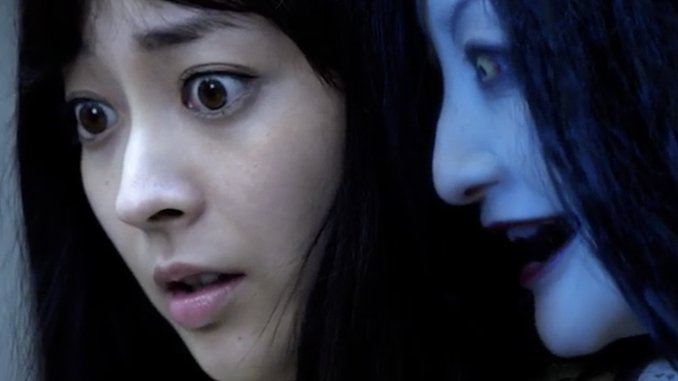
There are strange movies, and then there is Rokuroku: The Promise of the Witch. Currently on the festival circuit and having played at the Fantasia Film Festival last weekend, Rokuroku is a Japanese anthology horror film featuring nine loosely connected stories about people encountering the yōkai—a supernatural class of demons, spirits, and monsters from Japanese folklore. Interspersed is the story of friends Izumi and Mika, Izumi’s grandfather, and a cursed hotel, in what amounts to something like Four Rooms but, you know, with demons. It’s a film that defies expectation—maybe even categorization—but I don’t know if that defiance is enough to make it a good film.
Despite the horror tropes and imagery Rokuroku is loaded with, it didn’t read as very much of a scary movie to me. The monsters in these stories all have disfigured bodies, grotesque faces, or knives for hands, but the context they’re presented in makes them feel less scary than fantastical—whimsical, even—and sometimes just plain silly. It’s hard for me to tell if that’s the filmmakers intent, the filmmaker not hitting their mark, or a sign that I don’t understand Japanese cinema. Maybe it’s a little bit of all three.
But what Rokuroku lacks in traditional scares, it makes up for in spades with style. Each of the segments, all crafted by director Yudai Yamaguchi, offers up a drastically distinct aesthetic, tone, and pacing. Not every scene necessarily succeeds at this, and some fall flat completely, but the ambition certainly pays off in moments.
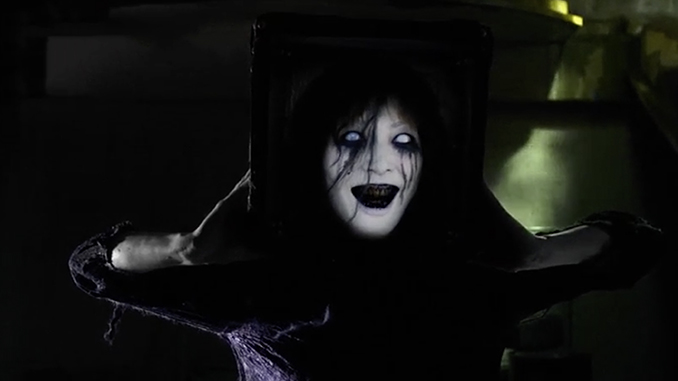
Karakasa features black and white shots, with extreme close-ups and the occasional splash of primary colors, evoking the smoky, neo-noir action vibe of Robert Rodriguez’s Sin City. Hako Onna mixes in quasi-found footage camera work and a feeling of claustrophobia found in urban ruins. Hitosume is by-and-large a slapstick comedy routine. But I think my favorite of this odd-assemblage of vignettes is the film’s third, Umibozu.
Have you ever wondered what it might look like if Wes Anderson adapted an H.P Lovecraft short? Well, it would probably look like Umibozu.
It’s hard not to feel hints of The Life Aquatic with Steve Zissou in Umibozu, with it’s symmetrically composed wide shots, saturated color palette, vintage feel, and general eccentricity. The absurdity of kids casually looking through a hole in a piece of driftwood at a horrifying behemoth rising out of the ocean feels like it would fit into Anderson’s filmography nicely. Of course, Rokuroku takes it to an extra level of weirdness by giving the monster women’s faces for eyes and dozens of hands for teeth. Because, why not?
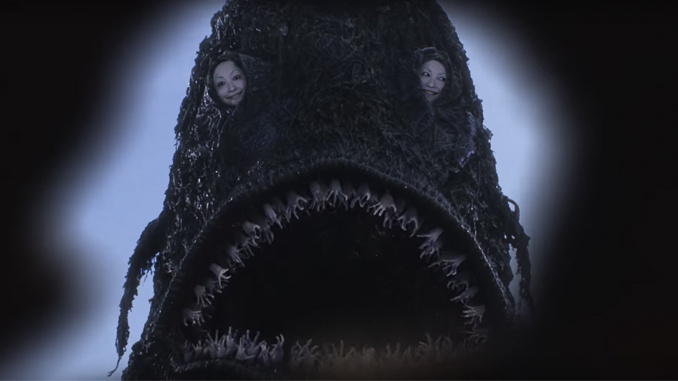
With that being said, there are some thoroughly creepy moments to be found in Rokuroku, even if they are few and far between. The aforementioned Hako Onna, in which two urban explorers come across a woman’s corpse in the rubble of an abandoned building, starts with a gross voyeuristic vibe before diving into true horror when the discovered corpse begins to animate, picking up the box containing its severed, shrieking head.
Another standout is Nekome, in which a woman is being pursued by a creepy cat-lady with a stroller. In most of these scenes, Rokuroku shows so much of its spooky demons and crazy knife monsters that they lose their scare power pretty quickly. Nekome does just the opposite, using light and shadow masterfully to obscure its monster, never letting you get a good look at it before it’s too late.
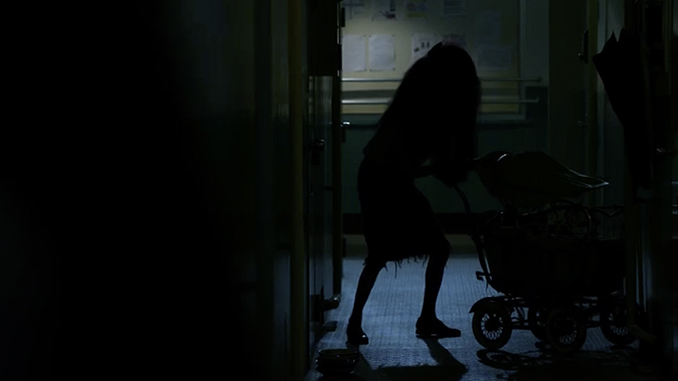
Surprisingly, it’s not the scarcity of scares that holds Rokuroku back the most, but rather its overarching storyline. The characters aren’t incredibly compelling and don’t have much to them beyond their chief role in the story. The plot moves along at a wildly inconsistent pace, not going anywhere for the first five or six times it has scenes, before jumping straight into high stakes and weaving in multiple new plot threads without much context. That’s why it’s unfortunate that two thirds of the way into the movie, Rokuroku ditches the anthology format to focus solely on the plight of Izumi and Mika.
What follows is a largely incongruous journey into an action-drama with a lot of bad CGI and nonsensical plot twists. Things happen—a lot of things—but I’m not entirely sure what or why. And in an honestly fitting, yet still bewildering move at the end of it all, the cursed hotel at the center of much of the movie rises up from its spot in the city on hundreds of hands and literally rides off into the sunset. I don’t get it, but it feels like the right way to wrap up a movie that I don’t think I got as a whole.
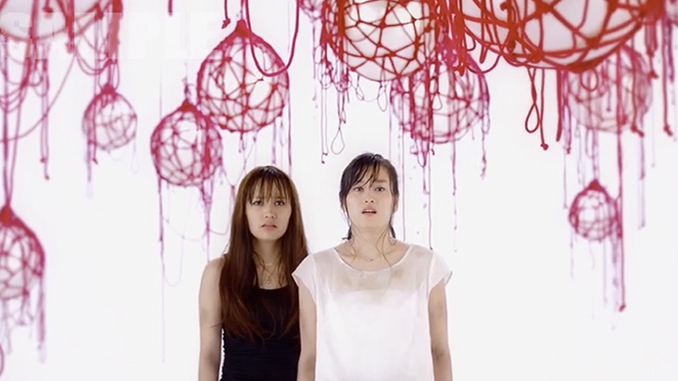

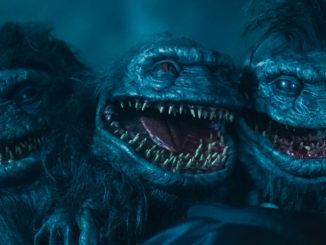
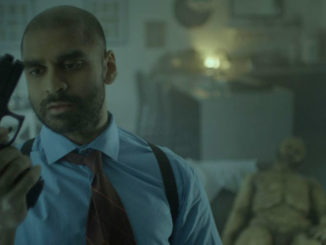
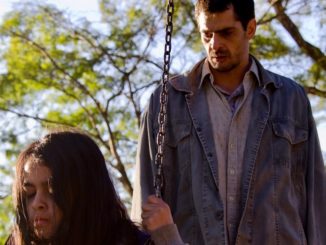
Be the first to comment